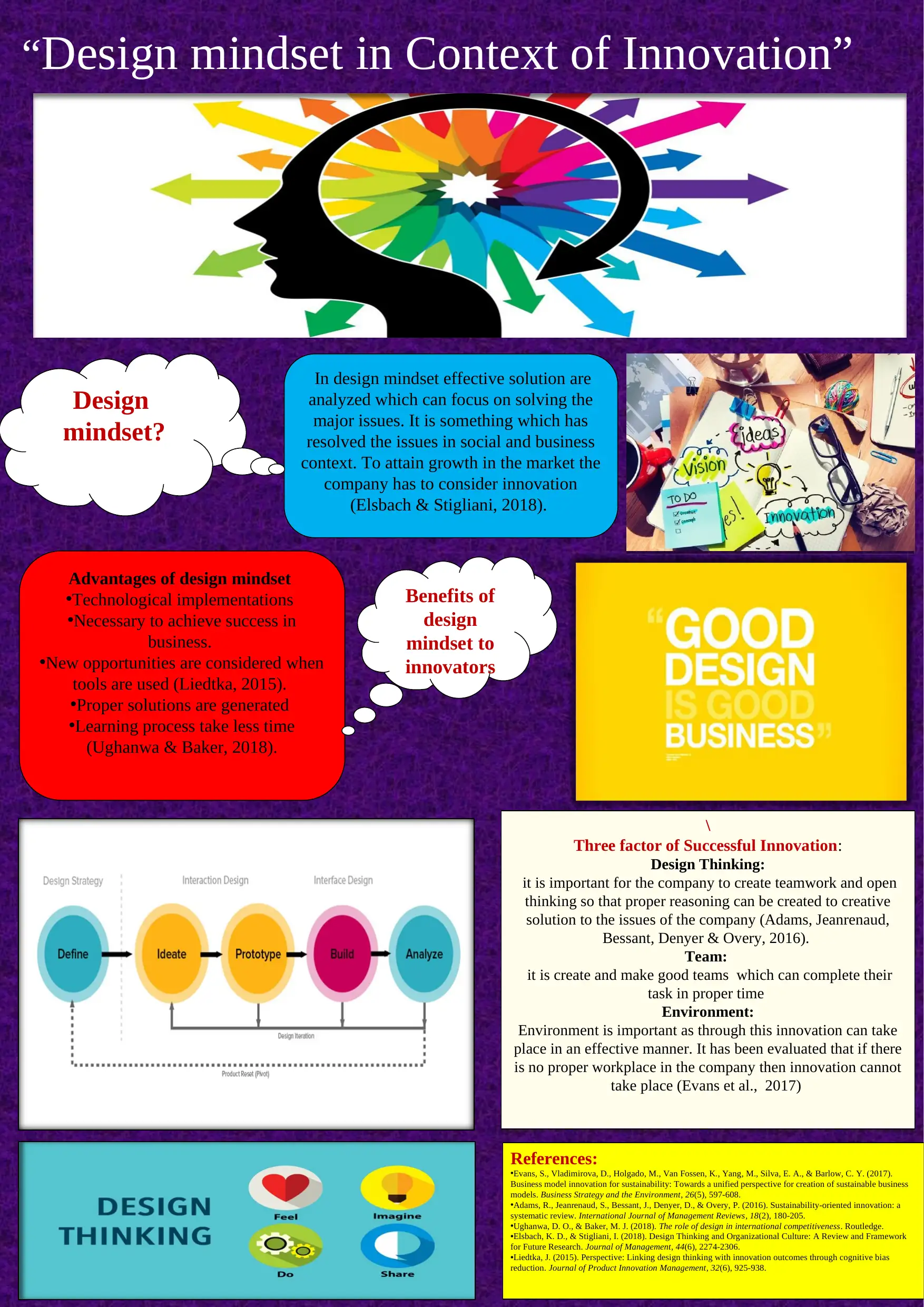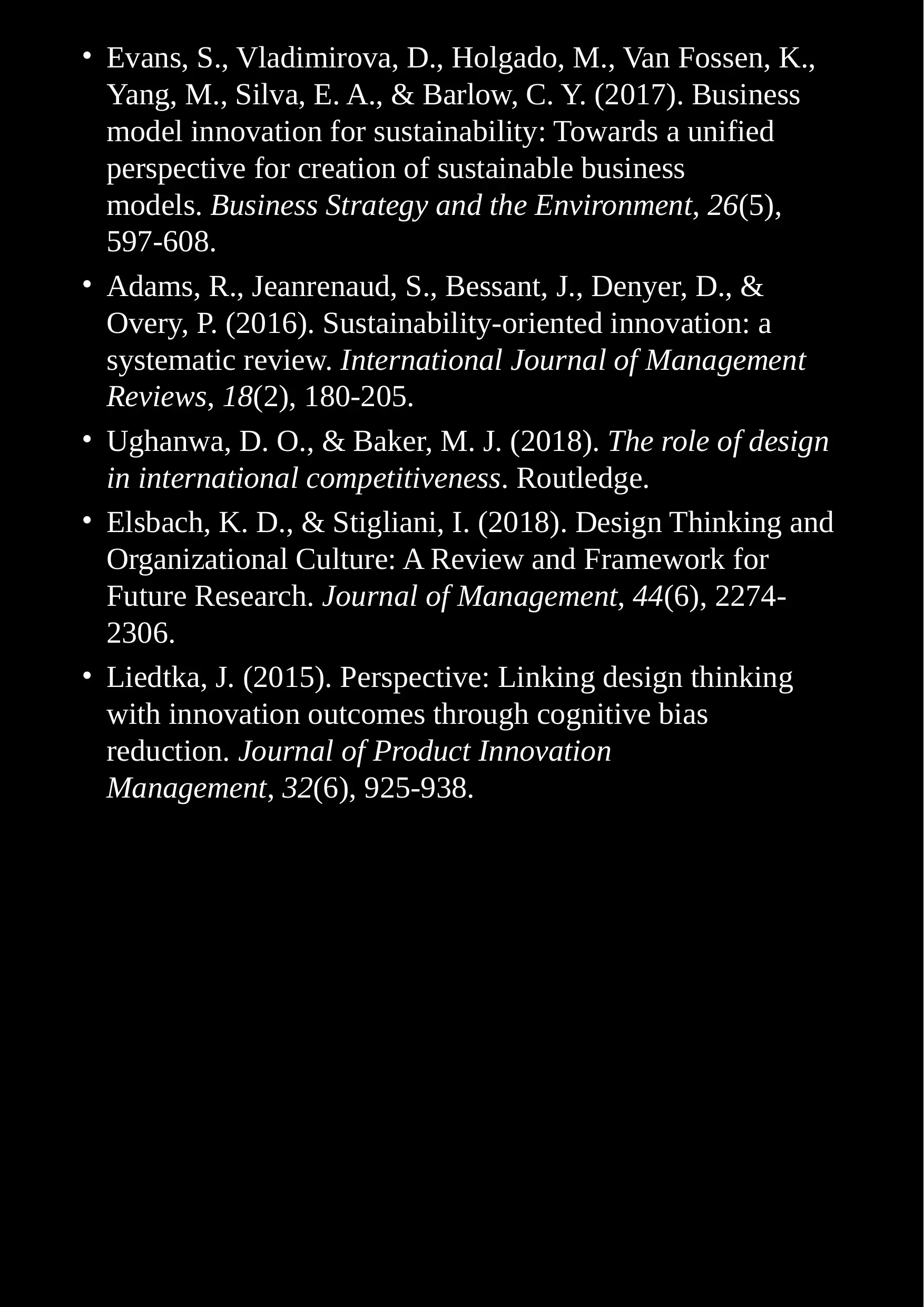Analyzing Design Mindset for Innovation in Business Context
VerifiedAdded on 2023/06/09
|2
|648
|74
Essay
AI Summary
This essay explores the concept of a design mindset and its importance in fostering innovation within a business context. It emphasizes that a design mindset focuses on analyzing effective solutions to address significant issues in both social and business environments, ultimately driving growth in the market. The advantages of adopting a design mindset include technological implementations, achieving business success, exploring new opportunities through tool utilization, generating proper solutions, and accelerating the learning process. Furthermore, the essay highlights three critical factors for successful innovation: design thinking, effective teamwork, and a conducive environment. Design thinking promotes open reasoning and creative problem-solving, while strong teams ensure timely task completion, and a supportive environment fosters innovation. The essay concludes by referencing several academic sources that support these concepts.
1 out of 2






![[object Object]](/_next/static/media/star-bottom.7253800d.svg)